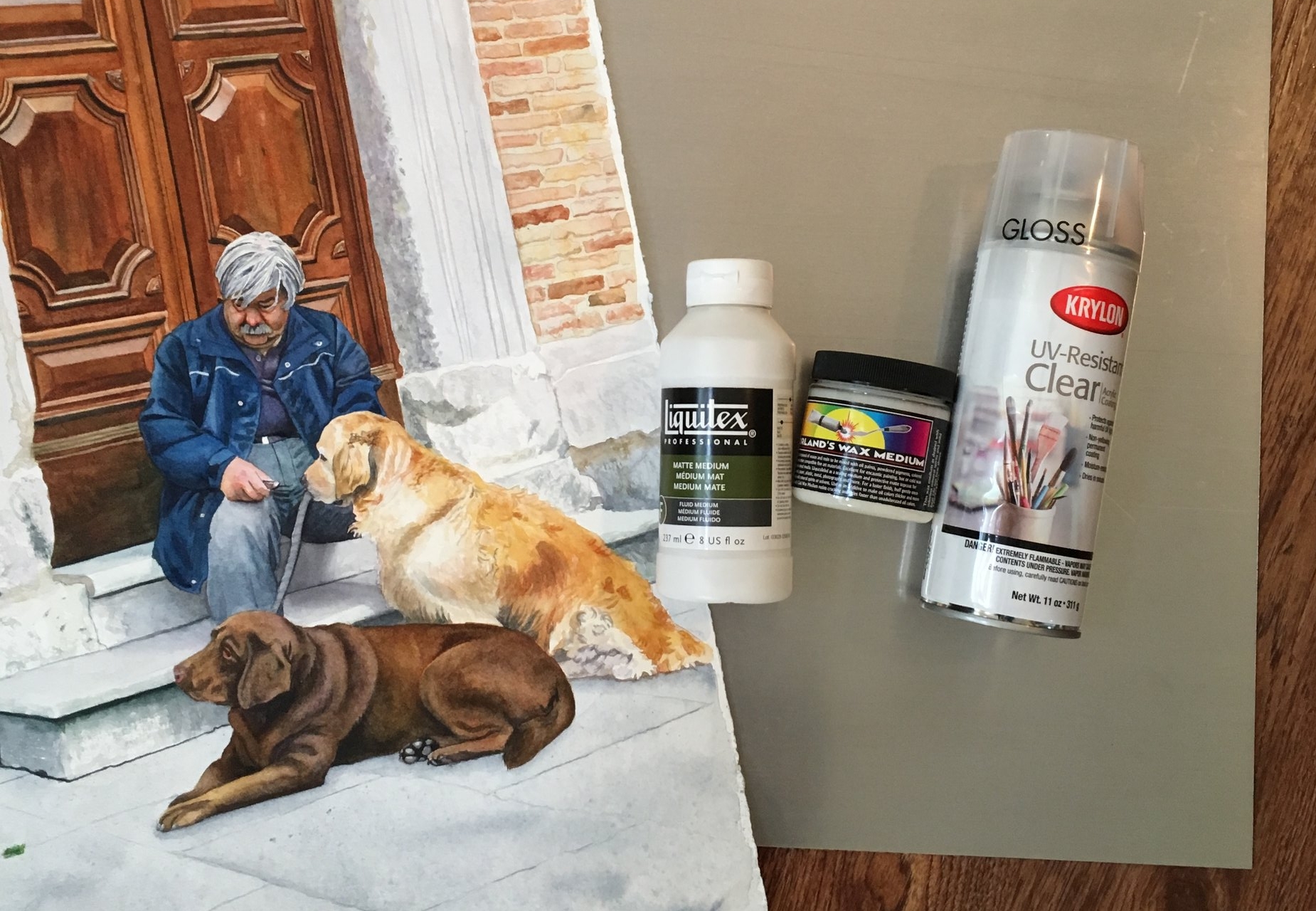Many (if not most) watercolor artists do not varnish their watercolor paintings. There are many good reasons for this, but there are also some advantages to the process. So I decided to roll up my sleeves and give it a try.
Traditionally, watercolors are put behind glass to preserve and protect them. "Museum" glass is really quite amazing in the way it protects agains UV rays and has little glare. But it's also REALLY expensive and I've been working on the larger side recently, which is even worse. Glass is very heavy, and it's difficult to ship without breakage. This is why many exhibitions require plexi glass be used for all shipped artwork.
But the glare on plexi glass bothers me. And the non-glare variety seems slightly hazy, certainly less than ideal. So the main reason I want to try varnishing is to show my larger pieces in a gallery without glass.
There are a lot of options on the market, and I've talked to other artists that do variations of the same basic idea. I decided to play it safe and do some tests on an older painting, so if I messed it up it wouldn't be a big deal. First, the finished watercolor paper needs to be mounted to a rigid surface. The most common is a wood panel or stretcher bars/canvas, but I chose an aluminum panel (see my blog post here for more on that).
I tried two different finishes. The first was a wax resign, typically used with oils, but perfectly fine for this use. (I used Dorlands Wax Medium.) It's my understanding that this non-yellowing resin has been used since Antiquity, and has been been found on the surfaces of ancient wall paintings. The amazing thing is it rubs on with a cloth without disturbing the watercolor at all. I was as skeptical as you probably are reading that, but it's true. After it dries it can be buffed for a luster finish, but it's definitely not a high gloss.
To achieve that, I used Golden Polymer Varnish. But in this case the watercolor definitely needs an isolation coat or fixative sprayed on before the varnish is applied. I sprayed on 8 thin coats of UV resist. This is best done outside or in a well ventilated area. Don't over do it! The last thing you want is a drip to form. Let each coat dry before applying the next.
Finally, mix 4 parts varnish with 1 part water and brushed it on with a 3" nylon brush. There was a slight haze at first, but it turns clear once it is dry. Also be careful not to go back and brush over areas too much, or it will cloud the finish.
This is a water based medium, so it cleans up easily. The down sides are you have to work quickly and it doesn't level out perfectly. I had slight brush strokes remain, which I thought was a nice look, but for a completely smooth finish I think I'll need to use a solvent based varnish. Stay tuned for that test...
At the right angle you can see the gloss finish.



